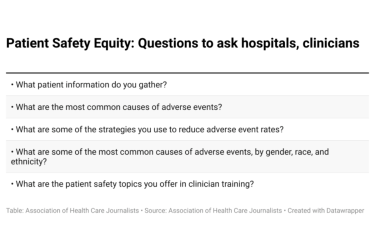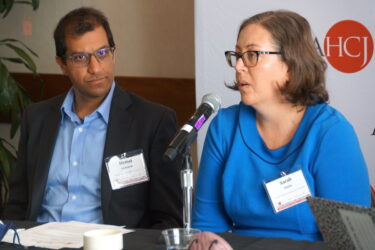
It’s about that time.
If you’ve been covering social determinants for a while, you’ve likely familiarized with the U.S. Census Bureau’s annual release of income, poverty and health insurance coverage data. If you’re new to health disparities, welcome to an annual rite.
Although the statistics measure the previous calendar year, they can provide a useful overall picture of how the United States is faring when it comes to income inequality, as well as access to health care. The figure is considered the nation’s official poverty rate.
The Census Bureau will release its latest findings for 2014 on Wednesday, Sept. 16. So what can we expect and what should you be looking for?
The findings offer a top-line look at the United States and give an overall poverty rate as well as how many people have health insurance and where household incomes stand seven years after economists cited the official end to the 2007-2009 recession.
While reporters and editors will have to sort through a lot of statistics, it should offer another piece in the ongoing puzzle of the U.S. recovery – something that is sure to get notice as the presidential campaign begins in earnest.
As The New York Times reported last year when the Census released its 2013 data:
“The poverty rate is much lower than the 19 percent of 50 years ago, when President Lyndon B. Johnson declared ‘unconditional war on poverty.’ But it is higher than it was in the 1970s, when the rate dropped as low as 11.1 percent.”
The Washington Post last year also included a number of good charts in addition to its main story, which can help you chart the trend as you plot your own pieces this month and in the days and weeks ahead. The Center on Budget and Policy Priorities also has this useful guide on historical trends in income inequality.
It’s also important to keep in mind, as the Times story said, that the income data does not factor in government benefits such as the Medicare or Medicaid health insurance programs, tax credits or housing assistance. The rate of overall population growth also plays a role.
But almost more important than Wednesday’s release is what comes out the next day. The Census on Sept. 17 will release the latest one-year data from its American Community Survey, breaking it down not only for the U.S. and the various states but also for metropolitan area for a more regional look. Health insurance coverage estimates for smaller areas will come out later in the year, according to Census officials. Those other data sets are important for tracking more local angles to the overall picture of poverty and health across the United States.
Here are some things to keep in mind as you comb through the data and Census’ many tables, especially for follow-up stories:
- What does the income look like for the typical family of four compared to an individual? What does the median household income look like?
- What’s happening with the top 5 percent of people in the U.S. with high incomes? The bottom tier?
- How are children faring? Have things improved or worsened for the nation’s youngest population?
- Are there any trends when you look at the data by race or gender?
- Has full-time working levels changed for any particular groups?
- What are national and local politicians saying in reaction to the findings? Will the data turn into a 2016 election story?
What stories will you find in the data? We’d be interested in seeing what follow-up pieces members write, especially those that dig below the top-line numbers or look behind the numbers to understand the trend. Send them to us at determinants@healthjournalism.org or use this crowdsourcing link at healthjournalism.org.









